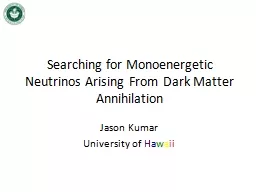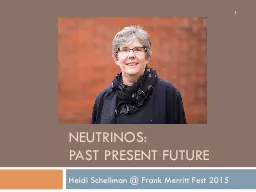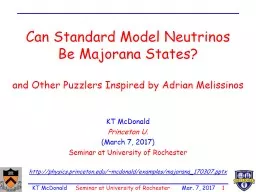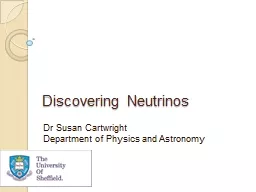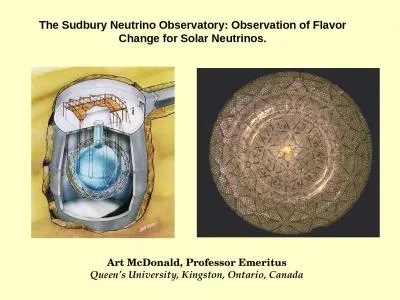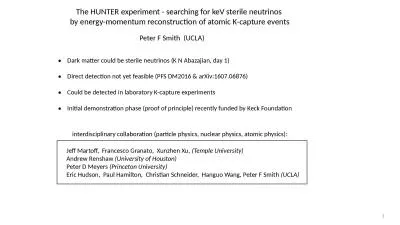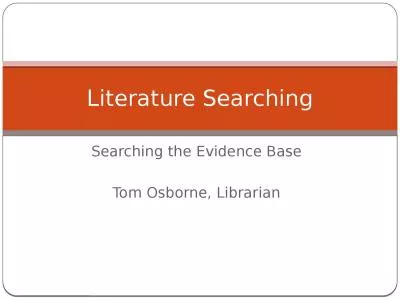PPT-Searching for Monoenergetic Neutrinos Arising
Author : mitsue-stanley | Published Date : 2015-11-30
From Dark Matter Annihilation Jason Kumar University of H a w a i i collaborators Jin In Carsten Rott Pearl Sandick Jennifer Gaskins David Yaylali 1502 02091
Presentation Embed Code
Download Presentation
Download Presentation The PPT/PDF document "Searching for Monoenergetic Neutrinos Ar..." is the property of its rightful owner. Permission is granted to download and print the materials on this website for personal, non-commercial use only, and to display it on your personal computer provided you do not modify the materials and that you retain all copyright notices contained in the materials. By downloading content from our website, you accept the terms of this agreement.
Searching for Monoenergetic Neutrinos Arising: Transcript
Download Rules Of Document
"Searching for Monoenergetic Neutrinos Arising"The content belongs to its owner. You may download and print it for personal use, without modification, and keep all copyright notices. By downloading, you agree to these terms.
Related Documents

